Yamaha RX-A3080 Review
Yamaha RX-A3080 Review
A Dolby Atmos DTS:X home cinema AV receiver, with AI sound processing and 4k support
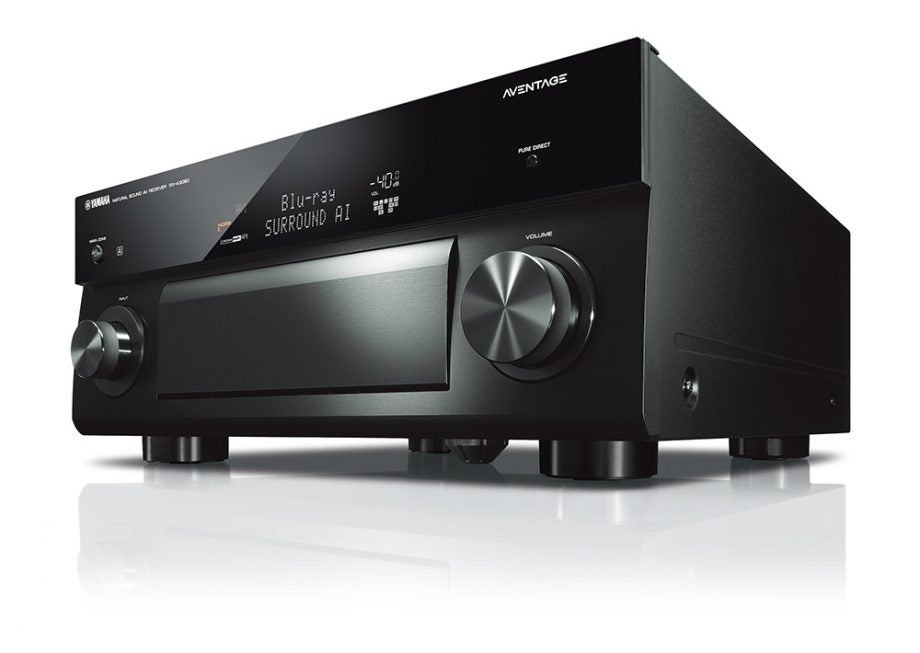
Verdict
The RX-A3080 AV receiver from Yamaha comes recommended, but with caveats
Pros
- Wide, immersive sound field
- Smart AI post-processing mode
- MusicCast
Cons
- 9-channel amplifier outgunned by 11-channel rivals
- Overly complicated set-up
- YPAO room EQ needs work
Key Specifications
- Review Price: £1999
- Dolby Atmos and DTS:X
- Smart AI DSP processing
- MusicCast
What is the Yamaha RX-A3080?
Yamaha has long pioneered the use of DSP audio processing to enhance the home theatre listening experience. Now, it’s invited artificial intelligence to the party, producing what is, quite literally, its smartest line of AV receivers yet.
A replacement for last year’s RX-A3070, the RX-A3080 is currently the flagship of its high-end Aventage line. It sits above the RX-A680, RX-A880, RX-A1080 and RX-A2080.
A nine-channel amplifier, it lends itself to a Dolby Atmos configuration of 5.1.4 or 7.1.2. There’s actually processing for 11 channels, but if you want to run 7.1.4, you’ll need additional amplification. Alternatively, you could opt for a more conventional 7.2 layout, redirecting the remaining stereo channels to a second room.
So, given that similarly priced rival receivers offer 11 channels of welly for much the same outlay, just how does Yamaha plan to win us over?
Related: Best soundbar
Yamaha RX-A3080 − Build and design
There are no surprises here when it comes to design. The aluminium fascia is familiar but elegant, with input and volume knobs either side of a drop-down door hiding front-facing controls. There’s no forward-facing HDMI input, although we do get a USB port, full-sized headphone jack, YPAO mic input for room EQ, and a pair of phono inputs.
The RX-A3080 has seven HDMI inputs, all of which are HDCP 2.2 4K 60p 4:4:4 compatible, so it will play well with everything. In addition, there are three HDMI outputs. This means you can run a TV using HDMI with ARC, alongside a projector in a single room, with the third HDMI serving a nearby room, along with analogue stereo for zones 2 and 3.
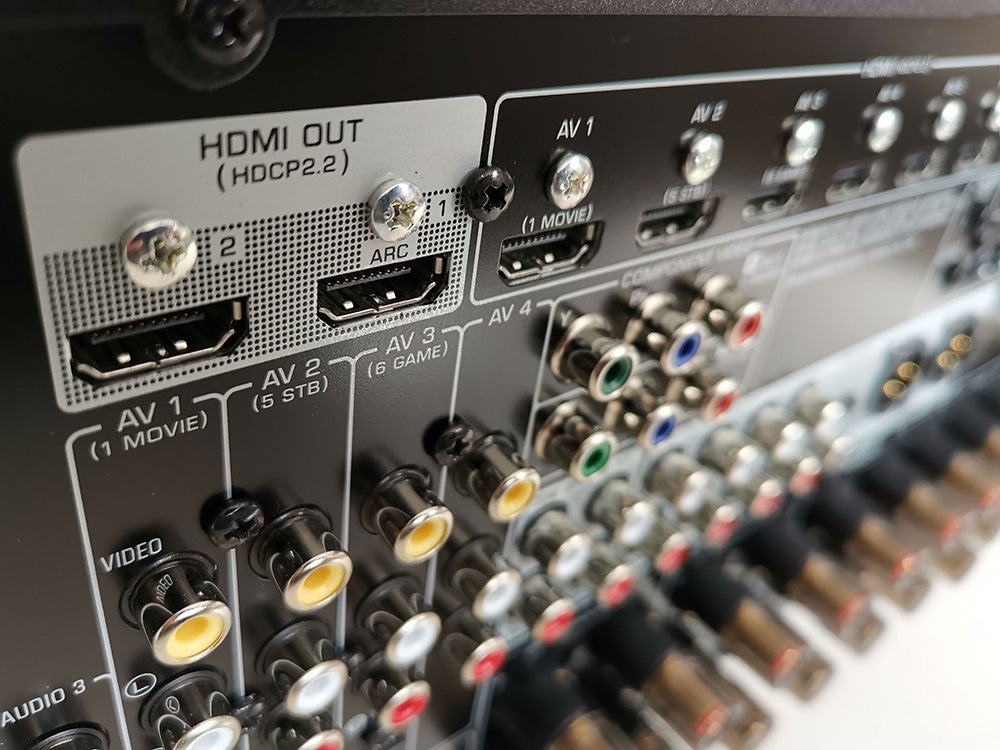
There are also six digital audio connections (three coaxial, three optical), plus AV and component inputs, although you might struggle to find things to hook up to them these days. There’s also a pair of XLR inputs, and a full set of channel pre-outs, again with an XLR stereo output.
The inclusion of XLR connectors is quite high-end. We suspect they’re mainly there so that the AVR can be partnered with Yamaha’s audiophile CDS2100 SACD player.
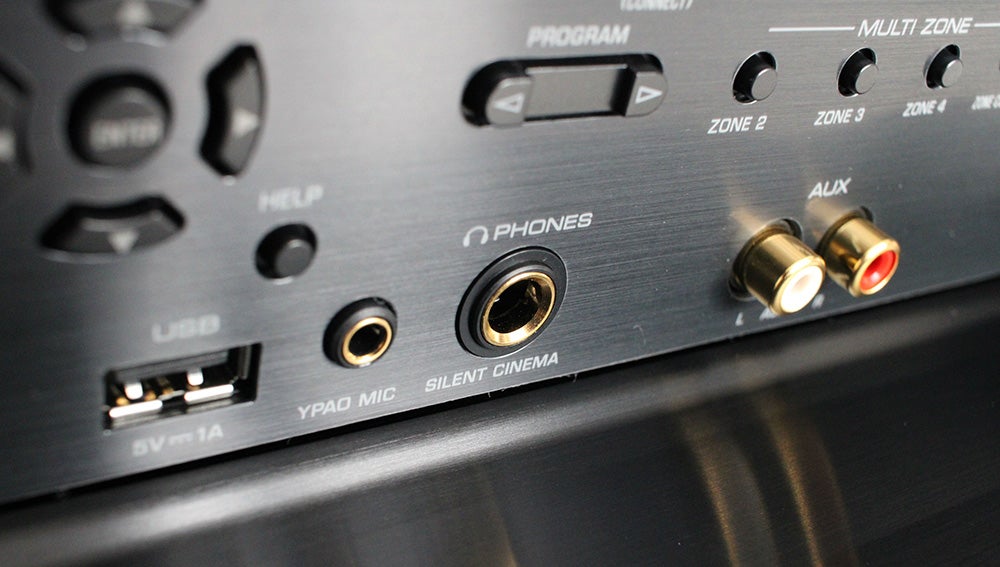
Network connectivity includes dual-band Wi-Fi with Ethernet, Bluetooth and Apple AirPlay. There’s also a DAB FM tuner and a phono preamp (MM).
At 17kg, this receiver is clearly built to last. The internal design adopts a classic H-shape, supported by an Anti Resonance Technology (ART) wedge foot to minimise vibration. ESS Sabre PRO ES9026PRO Ultra and Sabre ES9007S DACs cover main and presence channels.
Yamaha RX-A3080 − Setup and features
AV receivers continue to be one of the most complicated pieces of home tech you can own (one reason for sales having slowed since the advent of plug-and-play soundbars). But while some manufacturers have gone out of their way to simplify installation, Yamaha still keeps things obtuse.
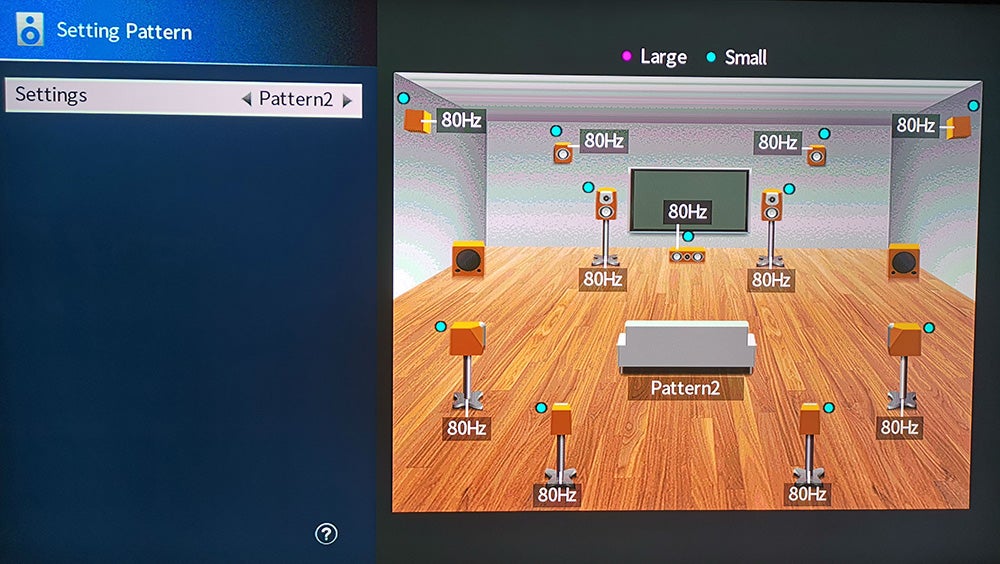
Once you’ve worked out that you need to assign channels (and translated its on-screen terminology into English), you can run YPAO-R.S.C. (Reflected Sound Control) room EQ. Just connecting the mic triggers the routine.
Once it’s done its thing, you’ll want to go in and offer a guiding hand, not least because YPAO seems determined to assign all speakers as Large. Regardless of physical size, it’s nearly always best to assign speakers as “small” in a home theatre, and allow the subs to crossover at 80Hz (and yes, there will be exceptions to this, but using “large” as a default is nearly always a bad move).
If you don’t much like what YPAO-R.S.C. has done, you can always assign a manual profile, then choose a crossover and apply YPAO parametric EQ (Flat, Front, Natural). This is old-school home cinema tweaking. Nothing very AI about this at all.
Yamaha RX-A3080 − Performance
Naturally, the RX-A3080 is compatible with both Dolby Atmos and DTS:X codecs. And in true Yamaha fashion, there’s a host of Cinema DSP HD3 post processing available too. You can alter the sound field with a little reverb and pixie dust, as befits presets dubbed Spectacle, Sci-Fi, and Sports.
What’s new, though, is Surround AI. This allows the AVR to analyse and optimise audio processing on the fly. On-board AI analyses content such as dialogue, sound effects and music dynamically. The effect can be a little unpredictable, but often adds height and width to the soundstage. The good news is that you can access it easily via the remote control.
Related: What is Dolby Atmos?
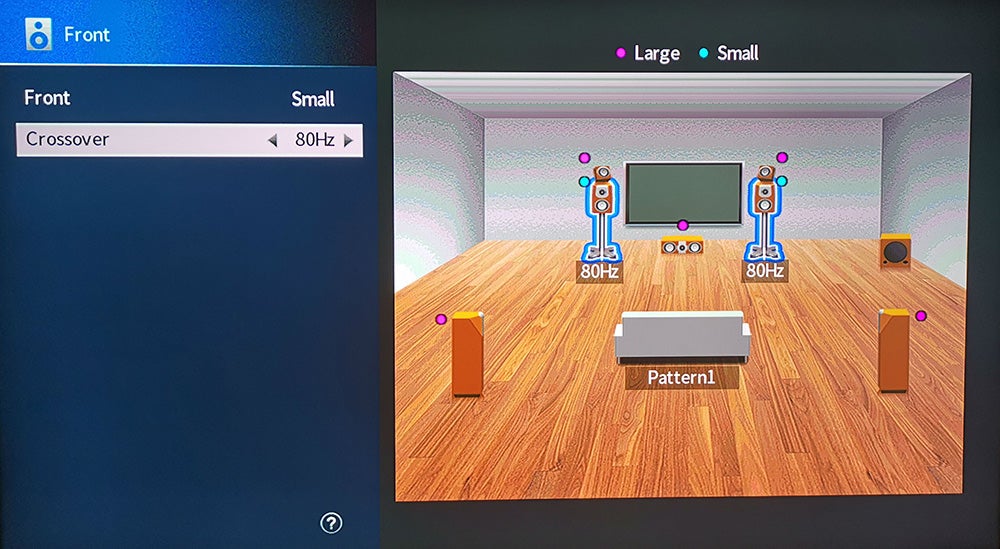
Power output is rated at 150W per channel (into 8-ohms), and this isn’t a paper-thin claim. In full multi-channel flight, the RX-A3080 sounds thrilling. Its sonic character is upfront and dynamic, perfect for big blockbuster TV shows and movies.
Courtesy of that Sabre Ultra DAC, the front soundstage bristles with detail, it’s wide and deep. And the surround sound field is totally immersive.
Running through Game of Thrones “The Long Night” (Dolby Digital 5.1, upscaled with Dolby Surround), Ramin Djawadi’s pounding, ominous score chills the blood, yet the clash of weaponry is distinct and chilling.
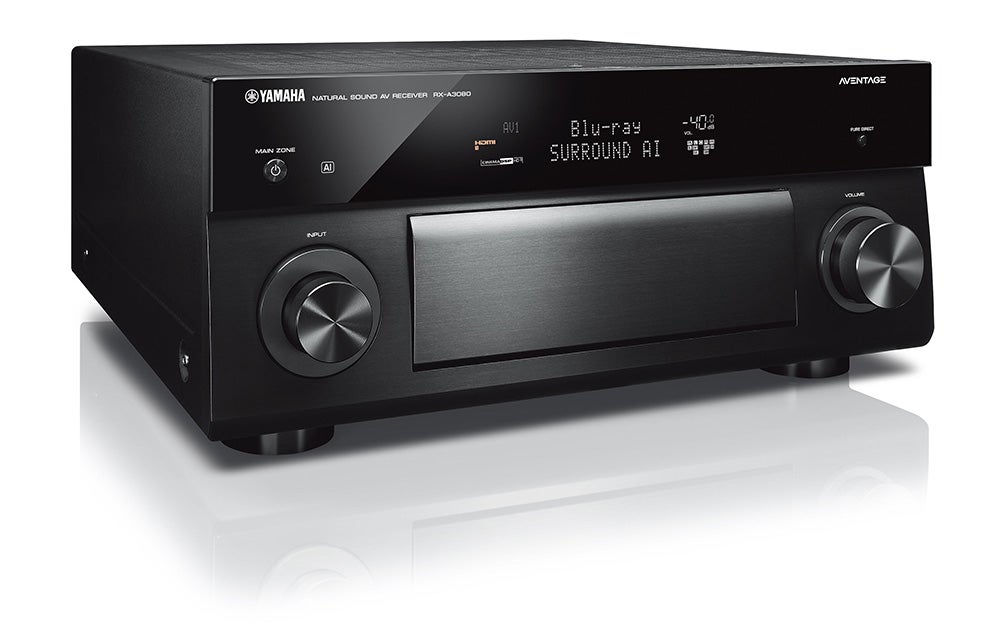
In full-blown Atmos, the soundstage becomes even more vivid. Hard, fast transients get a huge workout during the rain-drenched climax to John Wick (Blu-ray) – confirmation that the receiver can get properly visceral.
The various DSP presets are good fun, although finding the right mix for the right content is an ongoing chore. As a rule, we tend to prefer the genre-based concoctions (Adventure, Sci-Fi) for movies to the actual sampled acoustics of real venues for music.
Why buy the Yamaha RX-A3080?
This Yamaha doesn’t falter when it comes to performance. It’s a fast and exciting listen, perfectly at home with high-octane TV and movie mixes. It’s also perfectly fine with two-channel music.
The addition of Surround AI is a welcome wheeze. It’s a fresh new way to add DSP post-processing, and for the most part works well. If you’re putting together a Dolby Atmos sound system, be it 5.1.4 or 7.1.2, this receiver won’t disappoint.
Verdict
Powerful, with a penchant for drama, the RX-A3080 is an AV receiver with a top-class, home-theatre pedigree. It’s loaded with excellent functionality, most notably MusicCast multiroom compatibility and advanced AI-driven post-processing.
But with only nine channels of amplification on board, it’s at a disadvantage against similarly priced rival AVRs that wield 11 channels as standard.


